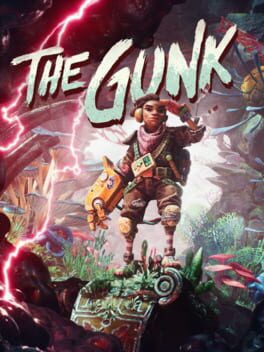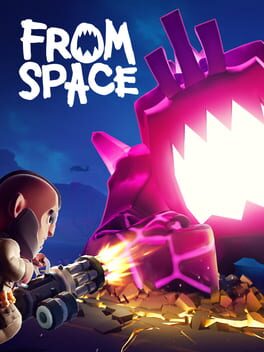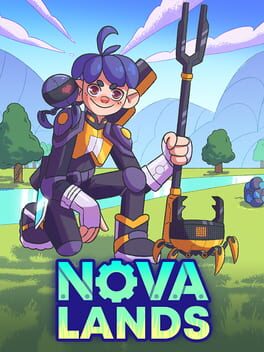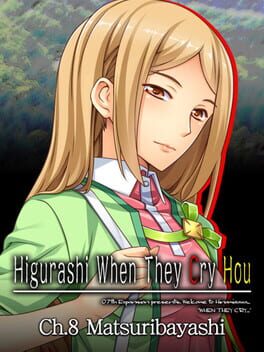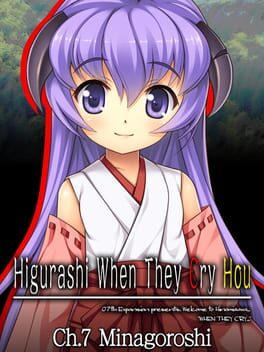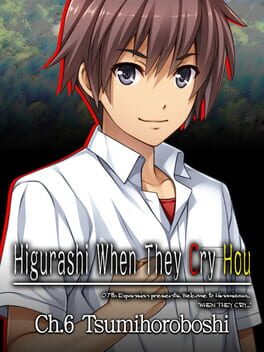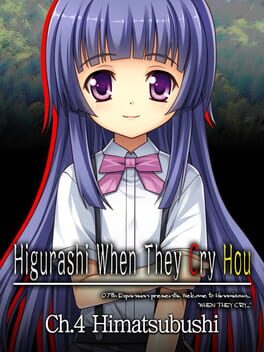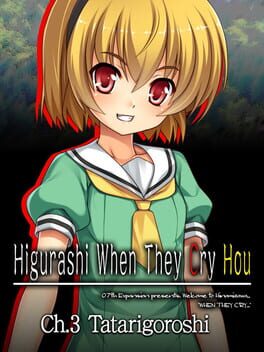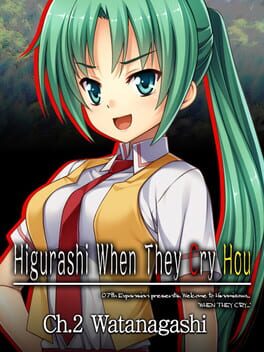kimpira
BACKER
2020
A factory sim that is a bit distinct from Zachtronics-style puzzle games in that it takes place on a large persistent map, rather than having a separate workspace for each level. It also has one single immovable drop off point in the center of the map. This encourages a big sprawling factory with lots of highways to move things around, but drawing roads gets dull after a while. Resource spawn points aren't movable either, and relatively sparse on the scale of your factory components, so you have a choice of either building near your hub (as near you can, as your factory expands) and drawing long roads to supply resources, or building near the resources and drawing long roads back to the hub.
The logistics are supposed to be part of the challenge, but it's not a very interesting one. I don't think I'll be playing much more of this, but I am still interested in the sequel that is supposed to come out this year.
The logistics are supposed to be part of the challenge, but it's not a very interesting one. I don't think I'll be playing much more of this, but I am still interested in the sequel that is supposed to come out this year.
2022
An alchemy-themed synthesis of Stardew Valley and the Atelier series. The idea has a lot of promise, and the pixel art is lovely, but everything else feels less substantial than its parent influences.
It has Stardew's stupid save system that only lets you save by going to bed, but for what reason? Probably to get people to mention Stardew in their reviews. An alchemist's life is much less rigidly scheduled than a farmer's, apparently. There's no weather, no seasons, no unique days of the year, no reason that anything needs to be done on a particular day, and no limit to your total number of days. Your only deadlines are when someone falls ill, but I've always been able to fix that before 7 AM on the day it happens. Apparently there aren't really any consequences to missing a treatment deadline, either: there are achievements for failing to cure one, and then ten, separate patients.
The game's story is about winning the trust of the villagers by repairing alchemy-related environmental damage around your island. The story rolls to a halt with only a little fanfare (a party scene at the local tavern) once you do.
It has Stardew's stupid save system that only lets you save by going to bed, but for what reason? Probably to get people to mention Stardew in their reviews. An alchemist's life is much less rigidly scheduled than a farmer's, apparently. There's no weather, no seasons, no unique days of the year, no reason that anything needs to be done on a particular day, and no limit to your total number of days. Your only deadlines are when someone falls ill, but I've always been able to fix that before 7 AM on the day it happens. Apparently there aren't really any consequences to missing a treatment deadline, either: there are achievements for failing to cure one, and then ten, separate patients.
The game's story is about winning the trust of the villagers by repairing alchemy-related environmental damage around your island. The story rolls to a halt with only a little fanfare (a party scene at the local tavern) once you do.
2021
A Humble Choice game for Dec. 2023. The Gunk is a very okay little puzzle platformer that's somewhat like Super Mario Sunshine or Okami: vacuum up toxic goo and restore the land. Movement and combat is much less sophisticated than in either of those games, but it works well enough.
For most of the game, exploration is straightforward enough that it's not really a puzzle platformer. Things gradually ramp up and by the end of the game, progression requires multiple steps over several rooms.
It has a vaguely environmentalist message, but unless I missed something, the story is too vibes-based to really make much of a point.
It's mostly a very pretty game, but the limits of its time/budget are apparent in face-to-face cutscenes between the MC and her parter. Their mouths move with their words, but their faces are otherwise still.
For most of the game, exploration is straightforward enough that it's not really a puzzle platformer. Things gradually ramp up and by the end of the game, progression requires multiple steps over several rooms.
It has a vaguely environmentalist message, but unless I missed something, the story is too vibes-based to really make much of a point.
It's mostly a very pretty game, but the limits of its time/budget are apparent in face-to-face cutscenes between the MC and her parter. Their mouths move with their words, but their faces are otherwise still.
2022
One of the Dec '23 Humble Choice games. It's a top-down twin stick co-op shooter, something like Torchlight or a very distant descendant of Gauntlet. Because it's so new and high-ish(?) budget compared to the stuff I usually play, it was a bit prettier than I'm used to, but it lacks personality. There's no real spark to it.
2013
This is a really nice extension to the first game that adds a lot of challenge. The first few levels require techniques to solve that the first game took several chapters to introduce. As such, it might be one of the few abstract puzzle game series that I'd recommend playing in order? Solving these more difficult puzzles was supremely satisfying, but I might have bounced off of it without the gentler coaching of the first game.
2023
Not a bad successor to Forager, which last I checked got abandoned after a doomed attempt at adding a co-op mode. I was a little worried that this was gonna be the kind of management game that gets me so engrossed in an endless sequence of super quick little tasks that I fuck up my hands/wrists from overuse, but the automation features kick in midway through and it's possible (but not required) to play it as something closer to an idle game.
2013
Following the consensus of the rest of the reviews here:
Saikoroshi is worthwhile and presents a scenario that modifies some fundamental facts about the setting and does cool thematic things with that.
Hirukowashi feels like a breather episode in a 90s anime like Tenchi Muyo or something.
Batsukoishi is a distillate of everything about the slice of life scenes in these games that made me wanna pull my own eyes out. I closed the program once I realized that making a conscious decision to hit eject early would be more satisfying than seeing wherever this shit was going.
Saikoroshi is worthwhile and presents a scenario that modifies some fundamental facts about the setting and does cool thematic things with that.
Hirukowashi feels like a breather episode in a 90s anime like Tenchi Muyo or something.
Batsukoishi is a distillate of everything about the slice of life scenes in these games that made me wanna pull my own eyes out. I closed the program once I realized that making a conscious decision to hit eject early would be more satisfying than seeing wherever this shit was going.
This review contains spoilers
A surprisingly soft-hearted finale for the series! Extremely long, with a big nonlinear section in the middle. I think in some other situation I might roll my eyes a bit at them even bringing back Satoshi, but right from the jump, they said that they were going to construct their ideal world from the fragments of all the ones they'd lived before.
The best one yet. With the Answer arcs, there was a danger that they'd settle for simply retelling previous chapters, but with added context. This one is a whole new story that makes significant departures in structure and tone from the other chapters, pulling the reader back and forth between differing perspectives.
This is it! I've been curious about Higurashi's Answer arcs ever since I was introduced to the concept. About half of this is dedicated to the year before Keiichi arrives in Hinamizawa, and the other half retells the events of the second game from the viewpoint of a character with more access and insight into the workings of the village.
Although the main character's vantage point demystifies a lot of what went on, it's still a single person's perspective, which inevitably leaves certain mysteries intact.
Although the main character's vantage point demystifies a lot of what went on, it's still a single person's perspective, which inevitably leaves certain mysteries intact.
This was fine. It starts off two years later than the events of the first three games, but then immediately flashes back to the original protests against the Hinamizawa dam. The retrospective telling kinda limits the suspense, but it was still interesting to see the version of events that the game settled on in this timeline.
Just when you think that this is gonna be nothing but real-world horror, it rockets off into the fantastic.
After each of these games, there's a little bonus scene where the characters discuss the plot as though they were actors in a play inspired by their own everyday lives. In this one, they consider the bad endings of the first three chapters and speculate on how to make things turn out better.
The games have all been completely linear, but it's interesting that the post-game review conceptualizes the games almost as deliberately selected and ordered cross-sections of a more conventional branching visual novel.
After each of these games, there's a little bonus scene where the characters discuss the plot as though they were actors in a play inspired by their own everyday lives. In this one, they consider the bad endings of the first three chapters and speculate on how to make things turn out better.
The games have all been completely linear, but it's interesting that the post-game review conceptualizes the games almost as deliberately selected and ordered cross-sections of a more conventional branching visual novel.
A step up from the previous one. Some of the humor is still either a bad transcription of a comic book sight gag or else a valid pretext for a law enforcement search of the author's hard drive.
This time around there are fun little mysteries both before and after the midpoint tonal shift. The MC's transgression is also (seemingly) clearer in Watanagashi, while the others' reaction to it is surprising enough to sustain reader interest.
Before ever playing any of these, I was a little bit skeptical that a visual novel/interactive fiction game without branches was going to be worthwhile. This format allows for stories that branch without specifying a single clear point of divergence or requiring the player to fastforward through an introductory section over and over again for each branch after the first.
This time around there are fun little mysteries both before and after the midpoint tonal shift. The MC's transgression is also (seemingly) clearer in Watanagashi, while the others' reaction to it is surprising enough to sustain reader interest.
Before ever playing any of these, I was a little bit skeptical that a visual novel/interactive fiction game without branches was going to be worthwhile. This format allows for stories that branch without specifying a single clear point of divergence or requiring the player to fastforward through an introductory section over and over again for each branch after the first.


